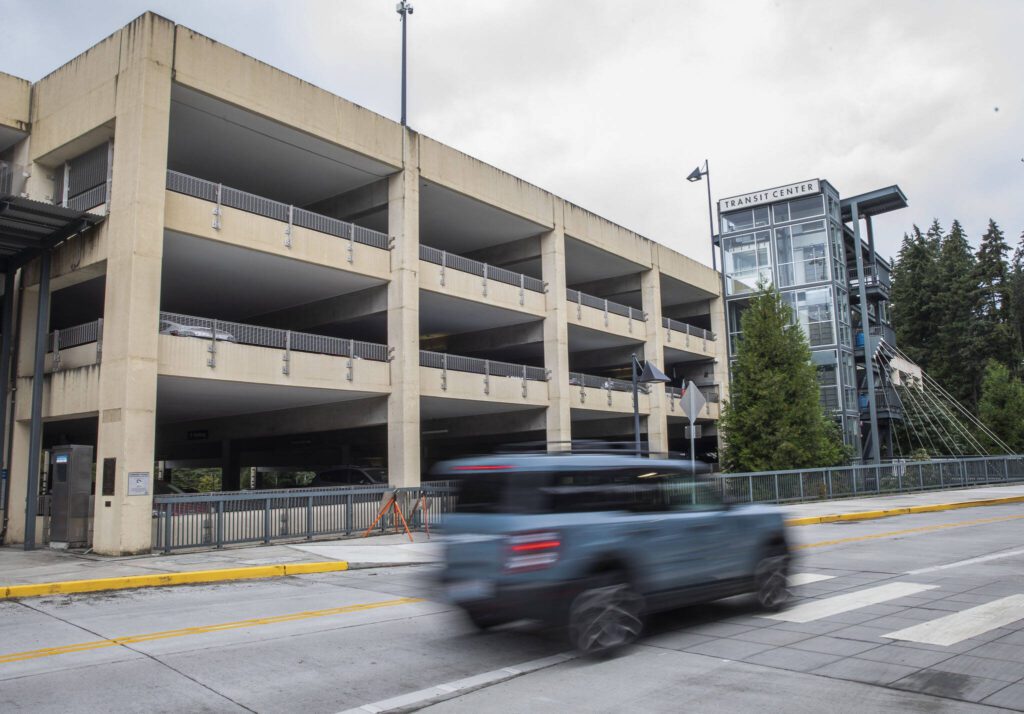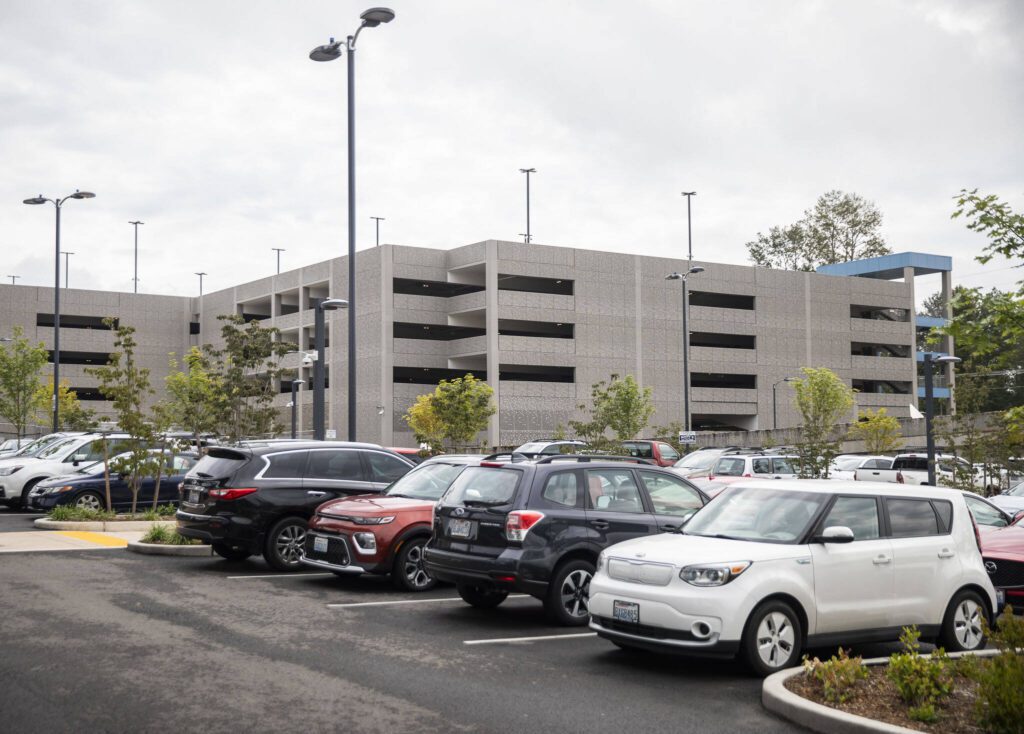LYNNWOOD — The story of the Lynnwood Link is as much about the changes surrounding the new service as it is about the 8.5 mile extension of the line.
Transit agencies in the Puget Sound region, including Sound Transit and Community Transit have spent years gaming out one extremely important factor — how to get people to rail. For many light rail transit riders, it will likely be a car trip.
“We do not have an estimate of how many people will be using their personal vehicles to get to the light rail stations,” Sound Transit spokesperson John Gallagher said in an email. “However, based on our experience at other stations, we expect that all four stations will be popular.”
Snohomish County residents looking to avoid finding parking in Seattle will be familiar with this. Driving to Northgate and catching the train into the city avoids the parking headache. That works pretty well on weekends, when there’s less commuter pressure on the line.
Now, Snohomish County residents will have more options on how to access rail. But parking could prove to be challenging. Even now, days before light rail service actually starts, the Lynnwood City Transit Center parking garage has seen significant usage.
Parking there and taking a bus down to Northgate and into the city is popular with some commuters and even college students at the University of Washington. But, space could get tight once those bus trips become direct light rail trips.
The Lynnwood City Transit Center garage has 1,670 parking spaces available inside and 226 surface spaces outside. Community Transit’s parking garage in Mountlake Terrace holds 668 cars and each of the two new Shoreline stations has 500 parking spots.
In total, that’s a touch over 3,500 spots to park. Sound Transit expects up to 55,000 daily riders on the line by 2026. At that point, both Link lines should be connected, which likely will surge ridership.
And that’s not even to say the pressure of what a sporting event or, say, a Taylor Swift concert brings to local mass transit.
“It’s worth keeping in mind that sporting events, like Huskies games, also attract a lot of drivers to Northgate, where they then board Link,” Gallagher said. “We anticipate that a lot of those riders will be boarding at stations closer to their starting point once the Lynnwood extension opens.”
Not all of those projected riders will be traveling south from Lynnwood or other stops along the new extension, but even some basic math suggests that not everyone who wants a parking place is going to get one.
That’s where the larger public transit comes in. For example, once large-scale Community Transit service changes begin Sept. 14, about half of all the agency’s service will touch Lynnwood City Transit Center. It’s more than a calculated move, it’s the strategy.
“The fact of light rail coming into service gives us that opportunity to pull all that bus service out of downtown Seattle and redeploy it within Snohomish County to provide more service and more frequency within our Snohomish County network,” said Community Transit CEO Ric Ilgenfritz. “So that’s the that’s sort of the light rail dividend, if you will, for Snohomish County, the opening up of this system creates better local transit service throughout the county. So that’s that’s sort of the foundational principle. That’s what we’re trying to accomplish.”
Orange Line itself was created with the intention of bringing people to the light rail line. Interest has been high, Community Transit officials have said, and it’s expected to grow. The more people that take buses or other options, like the Zip shuttle, the less pressure there is on the parking garages.
“As always, the main tip we have for riders is plan ahead,” Gallagher wrote.
Jordan Hansen: 425-339-3046; jordan.hansen@heraldnet.com; Twitter: @jordyhansen.
Talk to us
> Give us your news tips.
> Send us a letter to the editor.
> More Herald contact information.



























